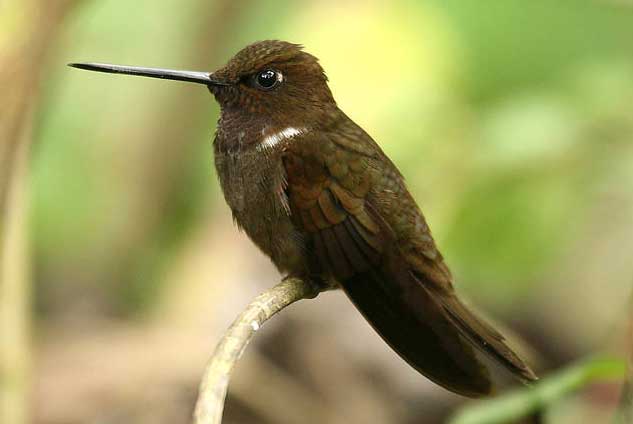
Coeligena wilsoni (*)
Superregnum: Eukaryota
Cladus: Unikonta
Cladus: Opisthokonta
Cladus: Holozoa
Regnum: Animalia
Subregnum: Eumetazoa
Cladus: Bilateria
Cladus: Nephrozoa
Superphylum: Deuterostomia
Phylum: Chordata
Subphylum: Vertebrata
Infraphylum: Gnathostomata
Megaclassis: Osteichthyes
Cladus: Sarcopterygii
Cladus: Rhipidistia
Cladus: Tetrapodomorpha
Cladus: Eotetrapodiformes
Cladus: Elpistostegalia
Superclassis: Tetrapoda
Cladus: Reptiliomorpha
Cladus: Amniota
Classis: Reptilia
Cladus: Eureptilia
Cladus: Romeriida
Subclassis: Diapsida
Cladus: Sauria
Infraclassis: Archosauromorpha
Cladus: Crurotarsi
Divisio: Archosauria
Cladus: Avemetatarsalia
Cladus: Ornithodira
Subtaxon: Dinosauromorpha
Cladus: Dinosauriformes
Cladus: Dracohors
Cladus: Dinosauria
Ordo: Saurischia
Cladus: Eusaurischia
Subordo: Theropoda
Cladus: Neotheropoda
Cladus: Averostra
Cladus: Tetanurae
Cladus: Avetheropoda
Cladus: Coelurosauria
Cladus: Tyrannoraptora
Cladus: Maniraptoromorpha
Cladus: Maniraptoriformes
Cladus: Maniraptora
Cladus: Pennaraptora
Cladus: Paraves
Cladus: Eumaniraptora
Cladus: Avialae
Infraclassis: Aves
Cladus: Euavialae
Cladus: Avebrevicauda
Cladus: Pygostylia
Cladus: Ornithothoraces
Cladus: Ornithuromorpha
Cladus: Carinatae
Parvclassis: Neornithes
Cohors: Neognathae
Cladus: Neoaves
Superordo: Caprimulgimorphae
Ordo: Apodiformes
Familia: Trochilidae
Subfamilia: Trochilinae
Genus: Coeligena
Species: Coeligena wilsoni
Name
Coeligena wilsoni (DeLattre & Bourcier, 1846)
References
Rev.Zool. 9 p.305
Vernacular names
English: Brown Inca
magyar: Barna inkakolibri
The brown inca (Coeligena wilsoni) is a species of hummingbird in the "brilliants", tribe Heliantheini in subfamily Lesbiinae. It is found in Colombia and Ecuador.[3][4]
Taxonomy and systematics
The brown inca and most other members of genus Coeligena were at one time placed in genus Helianthea but have been in their current placement since the mid-1900s.[5] The brown inca, bronzy inca (C. coeligena), and black inca (C. prunellei) are sister species.[5][6] The brown inca is monotypic.[3]
The species' specific epithet commemorates the American naturalist Thomas Bellerby Wilson.[7]
Description
Brown inca in northwest Ecuador showing amethyst throat.
The brown inca is about 11 to 13 cm (4.3 to 5.1 in) long. Males weigh about 7.0 g (0.25 oz) and females about 6.5 g (0.23 oz). Both sexes have a long, straight, black bill and a white spot behind the eye. Adult males' upperparts are reddish bronze with a greenish olive lower back and a bronzy forked tail. Their underparts are mostly dull brown with an amethyst gorget and a white patch on each side of the breast. Adult females are essentially the same as males but for a longer bill, a smaller gorget, and a less forked tail. Immatures resemble the adult female.[6]
Distribution and habitat
The brown inca is found on the Pacific slope of the Andes from Colombia's Chocó Department south through Ecuador all the way to Loja Province. It most commonly inhabits the edges of cloudforest and is also found in the forest interior. In elevation it generally ranges from 700 to 1,900 m (2,300 to 6,200 ft). However, it is most common below 1,300 m (4,300 ft) and has been recorded as high as 2,400 m (7,900 ft).[6]
Behavior
Movement
The brown inca probably makes some seasonal movements but little data are available.[6]
Feeding
The brown inca forages for nectar by trap-lining, visiting a circuit of a wide variety of flowering plants low in the forest understory. Examples include genera Psammisia, Macleania, Cavendishia, and Fuchsia. In addition to feeding on nectar it gleans small arthropods from vegetation and sometimes captures them by hawking.[6]
Breeding
The brown inca's breeding season spans from January to June. It builds a cup nest of moss and plant fibers, typically 2 to 3 m (7 to 10 ft) above ground in a fork of a small tree. The female alone incubates the clutch of two eggs for 15 to 16 days; fledging occurs 22 to 26 days after hatch.[6]
Dickcissel male perched on a metal pole singing, with neck stretched and beak open.
Songs and calls
Listen to brown inca on xeno-canto
Vocalization
What is thought to be the brown inca's song is "a repeated phrase comprising three notes, 'tsip-tzreeew-tzrew'". It has a variety of calls such as "tsit" and "tsi-tsit" notes and a "tsitsitsitsitsit…tsitsitsi...tsitsitsit..." series. In flight it utters "a short rattle 'trrr', short twitters... [and] a high-pitched 'tzree...tzee...tzee...tzee'."[6]
Status
The IUCN has assessed the brown inca as being of Least Concern, though its population size is unknown and believed to be decreasing.[1] It is regarded as uncommon to locally common. Its habitat is under threat by deforestation and it is not known if the species accepts human-altered landscapes. It does occur in several protected areas.[6]
References
BirdLife International (2016). "Brown Inca Coeligena wilsoni". IUCN Red List of Threatened Species. 2016: e.T22687810A93170539. doi:10.2305/IUCN.UK.2016-3.RLTS.T22687810A93170539.en. Retrieved 27 April 2022.
"Appendices | CITES". cites.org. Retrieved 2022-01-14.
Gill, F.; Donsker, D.; Rasmussen, P. (July 2021). "IOC World Bird List (v 12.1)". doi:10.14344/IOC.ML.11.2. Retrieved 15 January 2022.
HBW and BirdLife International (2020) Handbook of the Birds of the World and BirdLife International digital checklist of the birds of the world Version 5. Available at: http://datazone.birdlife.org/userfiles/file/Species/Taxonomy/HBW-BirdLife_Checklist_v5_Dec20.zip [.xls zipped 1 MB] retrieved 27 May 2021
Remsen, J. V., Jr., J. I. Areta, E. Bonaccorso, S. Claramunt, A. Jaramillo, D. F. Lane, J. F. Pacheco, M. B. Robbins, F. G. Stiles, and K. J. Zimmer. Version 31 January 2022. A classification of the bird species of South America. American Ornithological Society. https://www.museum.lsu.edu/~Remsen/SACCBaseline.htm retrieved February 1, 2022
Züchner, T. and P. F. D. Boesman (2020). Brown Inca (Coeligena wilsoni), version 1.0. In Birds of the World (J. del Hoyo, A. Elliott, J. Sargatal, D. A. Christie, and E. de Juana, Editors). Cornell Lab of Ornithology, Ithaca, NY, USA. https://doi.org/10.2173/bow.broinc2.01 retrieved 27 April 2022
Jobling, James A. (2010). Helm Dictionary of Scientific Bird Names. ISBN 978-1-4081-2501-4.
Retrieved from "http://en.wikipedia.org/"
All text is available under the terms of the GNU Free Documentation License

